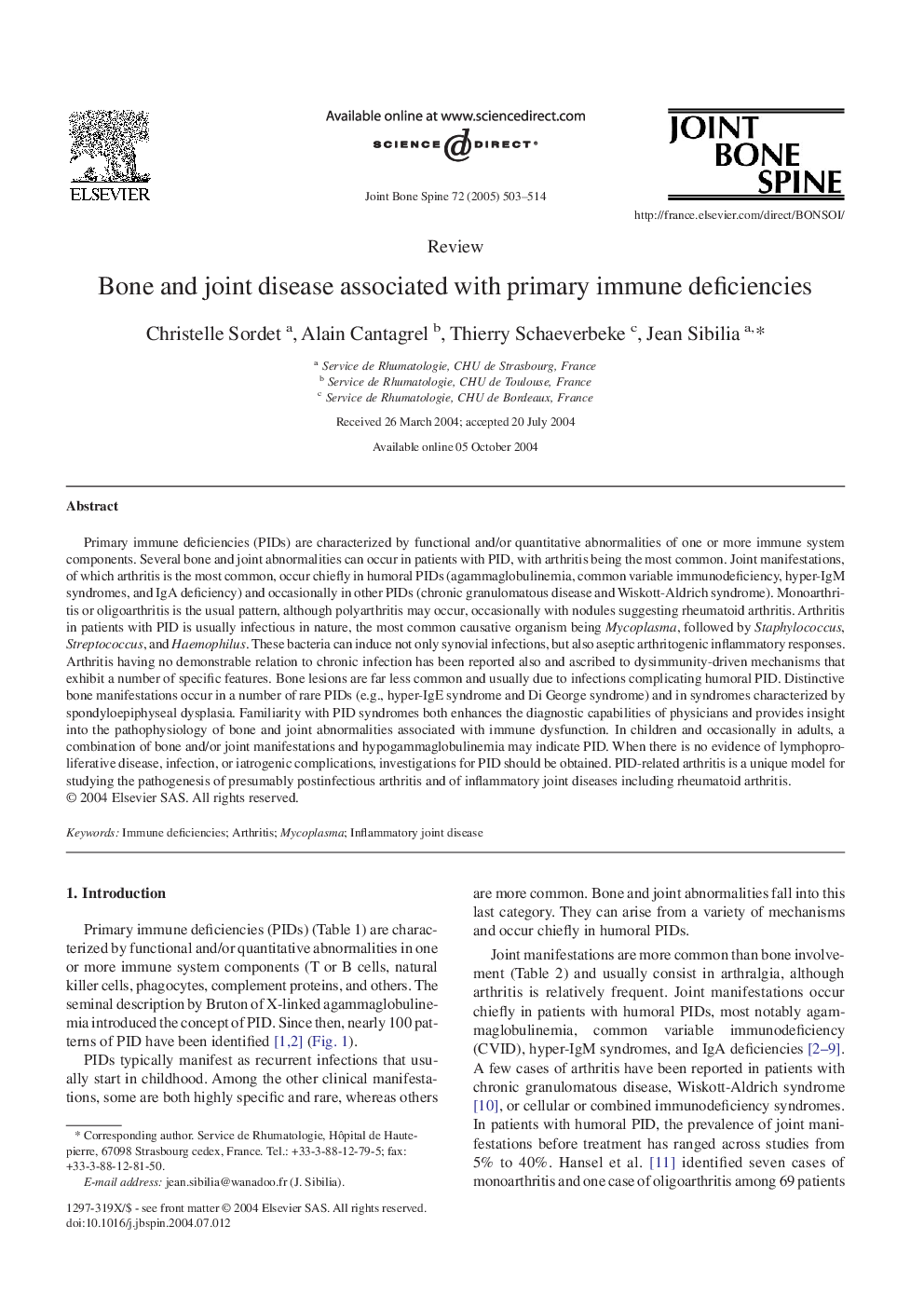| کد مقاله | کد نشریه | سال انتشار | مقاله انگلیسی | نسخه تمام متن |
|---|---|---|---|---|
| 9267196 | 1218433 | 2005 | 12 صفحه PDF | دانلود رایگان |
عنوان انگلیسی مقاله ISI
Bone and joint disease associated with primary immune deficiencies
دانلود مقاله + سفارش ترجمه
دانلود مقاله ISI انگلیسی
رایگان برای ایرانیان
کلمات کلیدی
موضوعات مرتبط
علوم پزشکی و سلامت
پزشکی و دندانپزشکی
ایمونولوژی، آلرژی و روماتولوژی
پیش نمایش صفحه اول مقاله

چکیده انگلیسی
Primary immune deficiencies (PIDs) are characterized by functional and/or quantitative abnormalities of one or more immune system components. Several bone and joint abnormalities can occur in patients with PID, with arthritis being the most common. Joint manifestations, of which arthritis is the most common, occur chiefly in humoral PIDs (agammaglobulinemia, common variable immunodeficiency, hyper-IgM syndromes, and IgA deficiency) and occasionally in other PIDs (chronic granulomatous disease and Wiskott-Aldrich syndrome). Monoarthritis or oligoarthritis is the usual pattern, although polyarthritis may occur, occasionally with nodules suggesting rheumatoid arthritis. Arthritis in patients with PID is usually infectious in nature, the most common causative organism being Mycoplasma, followed by Staphylococcus, Streptococcus, and Haemophilus. These bacteria can induce not only synovial infections, but also aseptic arthritogenic inflammatory responses. Arthritis having no demonstrable relation to chronic infection has been reported also and ascribed to dysimmunity-driven mechanisms that exhibit a number of specific features. Bone lesions are far less common and usually due to infections complicating humoral PID. Distinctive bone manifestations occur in a number of rare PIDs (e.g., hyper-IgE syndrome and Di George syndrome) and in syndromes characterized by spondyloepiphyseal dysplasia. Familiarity with PID syndromes both enhances the diagnostic capabilities of physicians and provides insight into the pathophysiology of bone and joint abnormalities associated with immune dysfunction. In children and occasionally in adults, a combination of bone and/or joint manifestations and hypogammaglobulinemia may indicate PID. When there is no evidence of lymphoproliferative disease, infection, or iatrogenic complications, investigations for PID should be obtained. PID-related arthritis is a unique model for studying the pathogenesis of presumably postinfectious arthritis and of inflammatory joint diseases including rheumatoid arthritis.
ناشر
Database: Elsevier - ScienceDirect (ساینس دایرکت)
Journal: Joint Bone Spine - Volume 72, Issue 6, December 2005, Pages 503-514
Journal: Joint Bone Spine - Volume 72, Issue 6, December 2005, Pages 503-514
نویسندگان
Christelle Sordet, Alain Cantagrel, Thierry Schaeverbeke, Jean Sibilia,